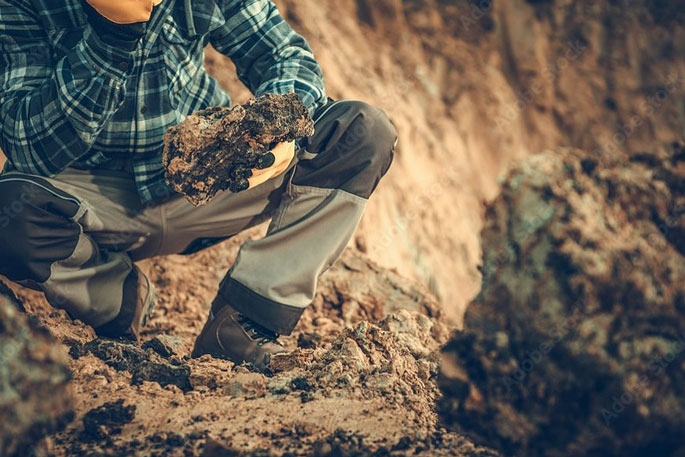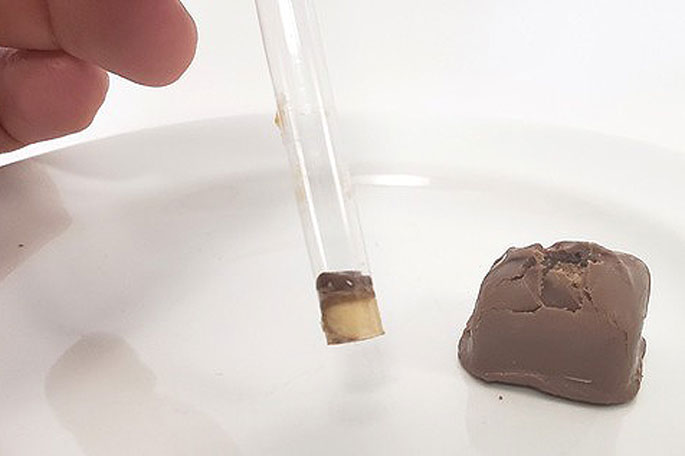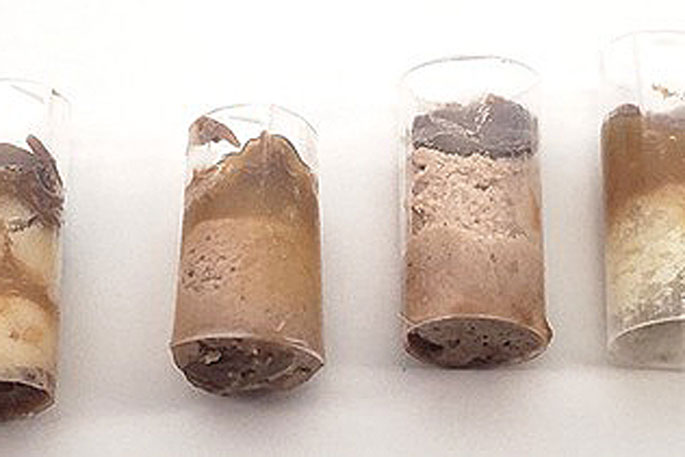 |
Science talk With Chris Duggan House of Science |
Chris Duggan is a scientist, educator, mother of two adult daughters, and farmers wife. After many years teaching secondary school Science and Chemistry, she switched her focus to primary schools by setting up a charity called House of Science in 2013. This large organisation supports thousands of teachers with science resource kits and professional development.
See what Chris has to say in her latest blog below.
Have you got what it takes to become a budding geologist?
Geologists use large drills to take what are called core samples of soil and rocks on Earth. These core samples show layers of rocks and dirt accumulated over many years. Scientists can even figure out when volcanoes erupted in the past by looking for layers of volcanic ash.

With this fun activity, you can become a geologist and create your own core samples using your Halloween chocolate goodies.
At House of Science NZ, we offer two science resource kits that can be related to this topic – Soil Secrets and Volcanoes.
https://houseofscience.nz/science-kits/
Materials
- Assorted mini or fun-size chocolate bars like Snickers, Milky Way, and Mars. (Avoid solid or 'hard” chocolate bars like Crunchie bar). Alternatively, this activity can be done with layers of play-doh instead of chocolate if you prefer.
- Clear drinking straws (biodegradable/compostable straws are more environmentally friendly than plastic straws)
- Scissors
- Small Plate
- Paper Towels
 Removing a candy core sample with a straw.
Removing a candy core sample with a straw.
Instructions
NB: This activity works best when your chocolate bars are slightly above room temperature.
If the chocolate bars are too hard, it will be too difficult to push them through the straw and if they are too warm, you're likely to end up with a gooey mess if you do find yourself having a bit of trouble getting the chocolate into the straw, especially when doing the activity with younger children, you could look at the layers by cutting the chocolate bars in half with a knife to view their cross-sections.
- Unwrap your chocolate bar and put it on a plate.
- Carefully poke a straw from the top of your chocolate bar through to the bottom of your chocolate bar. You may need to gently twist or wiggle the straw to get it all the way through.
- Gently pull the straw out of the chocolate bar.
- Using a damp paper towel, wipe the outside of the straw to ensure that it is nice and clean, and free of chocolate or sticky bits.
- Use scissors to cut the straw just above the chocolate inside.
- Place your core sample next to the wrapper for the chocolate bar – so you can identify at the end which sample came from which chocolate bar.
- Repeat steps 1-7 for your other core chocolate bar samples (a good number to have is 3-4 samples)
The Science:
Many chocolate bars have multiple layers of different ingredients inside from the chewy caramel to the chocolate.
When you take a cylindrical 'core sample” using a clear straw, the layers are visible in the straw. With multiple samples, you can do a side-by-side comparison of the various layers. You can also match an unknown sample to an existing sample to identify the source of the unknown sample just like geologists do to learn more about our world.
 Chocolate core samples.
Chocolate core samples.
Did you know that NASA astronauts recently gathered core samples using the Mars Rover to analyse the rocks and soil on Mars? One day, NASA hopes to send people to live on Mars so understanding the rocks on Mars helps them plan for this.
About House of Science:
House of Science NZ was founded in 2013 by CEO Chris Duggan and branch #1 opened in Tauranga covering the Western BOP.
Now nine years later, House of Science NZ has 19 branches scattered around New Zealand and is aiming to open its 20th branch in early 2023.
House of Science's purpose is to empower teachers to raise scientific literacy levels by providing comprehensive science resources for use in all of New Zealand Year 0 to Year 8 teaching environments.
House of Science achieves this purpose by developing relevant, comprehensive resource kits complete with teacher manuals, student worksheets, and all materials needed to carry out engaging science lessons.
The nature of the experiments allows kinesthetic learning that all students enjoy, regardless of their learning styles. All kits are also bilingual and resources are published in English and te reo Māori.
House of Science NZ is a charitable trust and relies on the support and funding of the community via donations, sponsorship, and volunteers.
For more information on how to get involved - https://houseofscience.nz/get-involved/
Social Media Channels – Facebook – www.facebook.com/HouseofScience,
Instagram – www.instagram.com/housesci.nz
LinkedIn - https://www.linkedin.com/in/houseofsciencenz/


